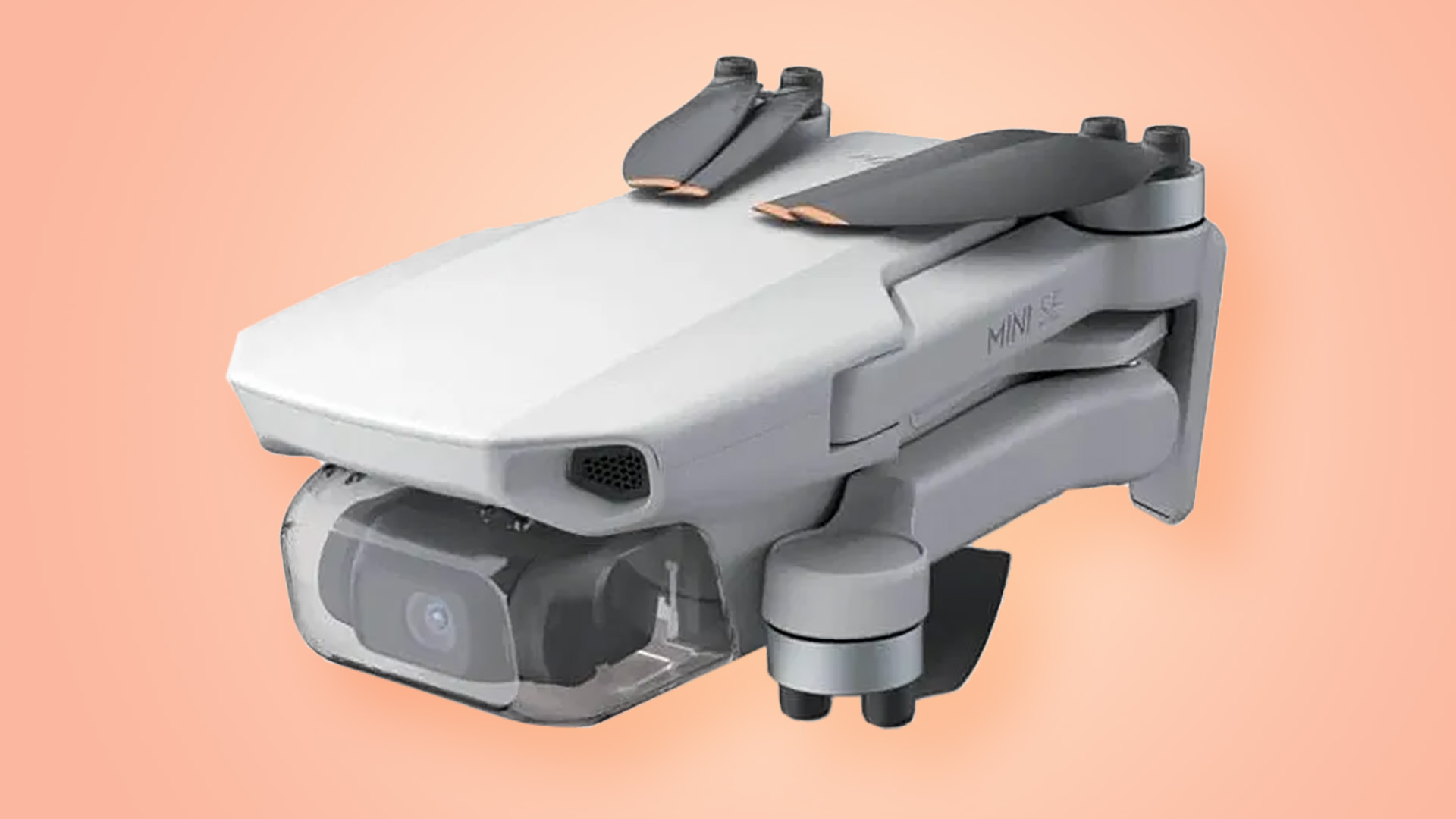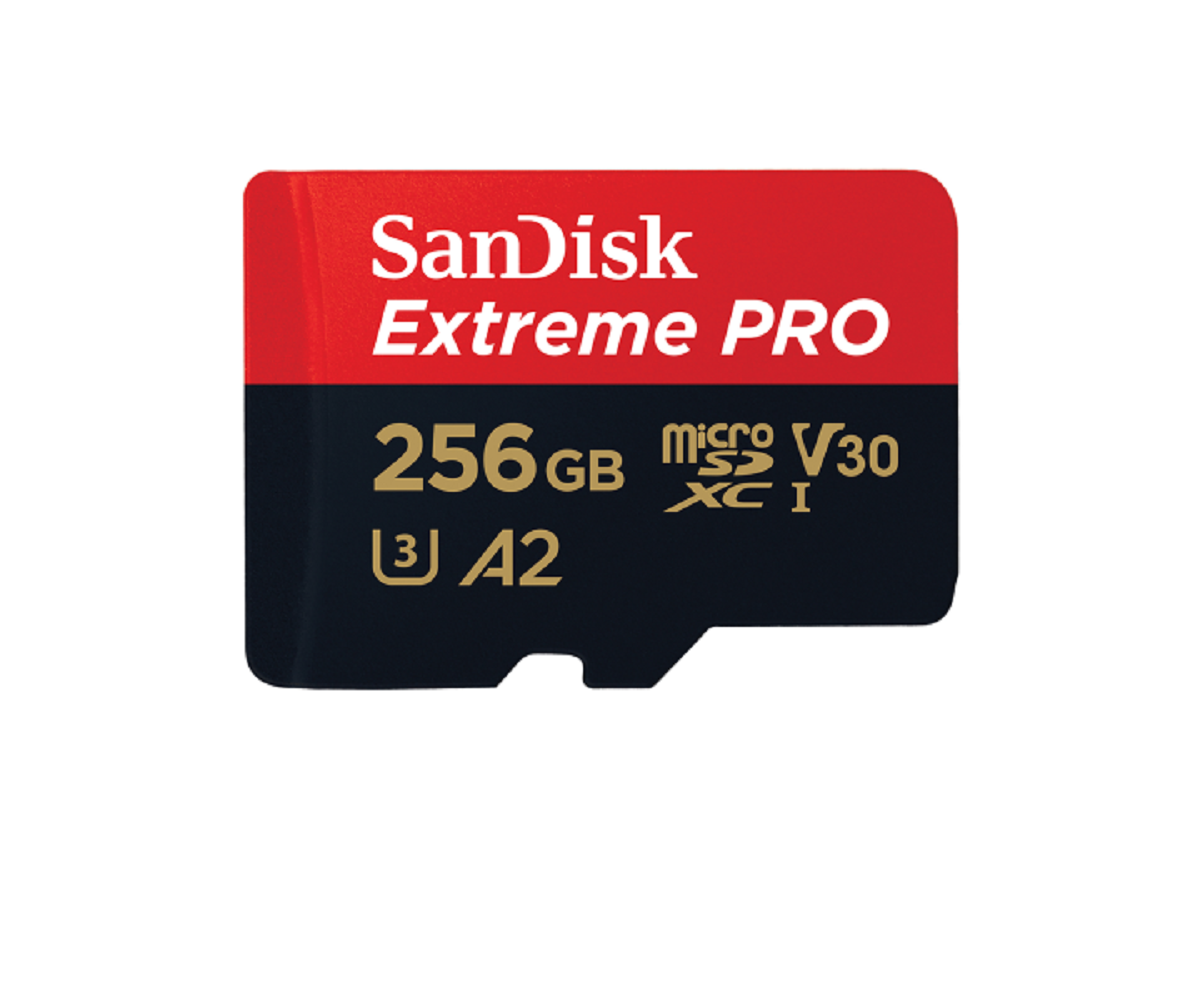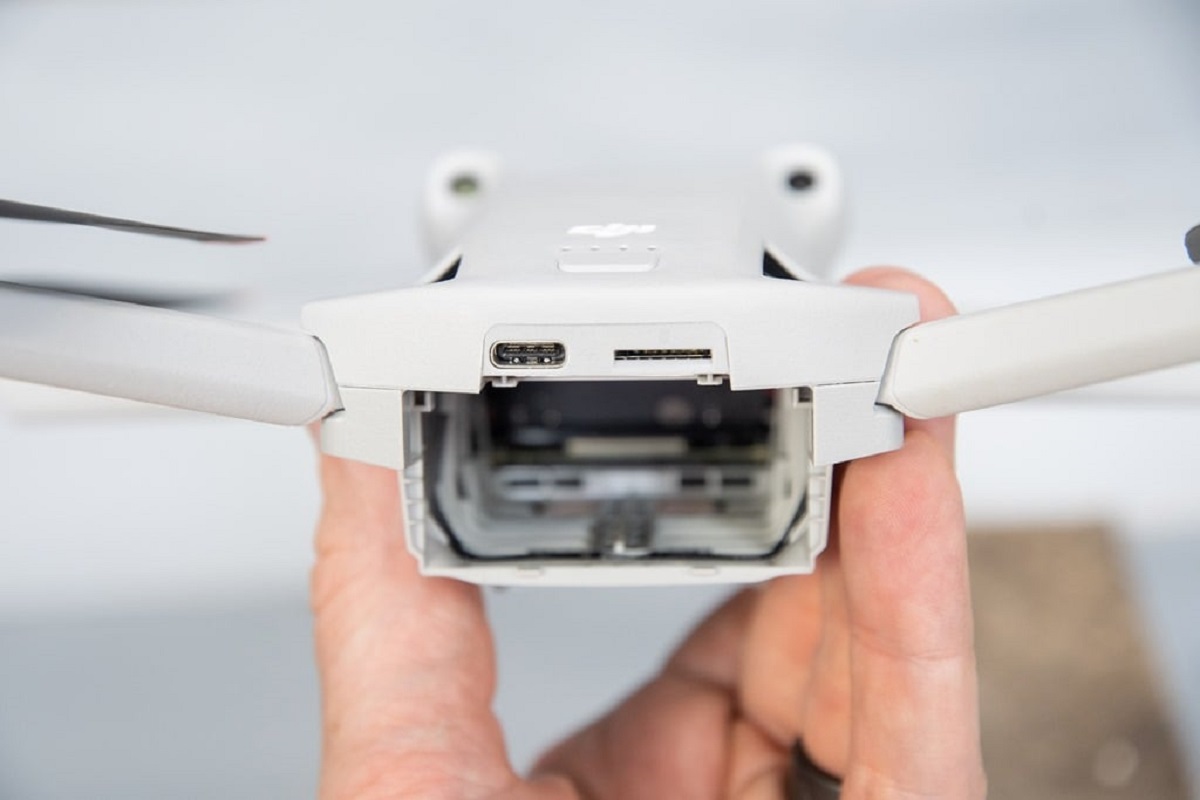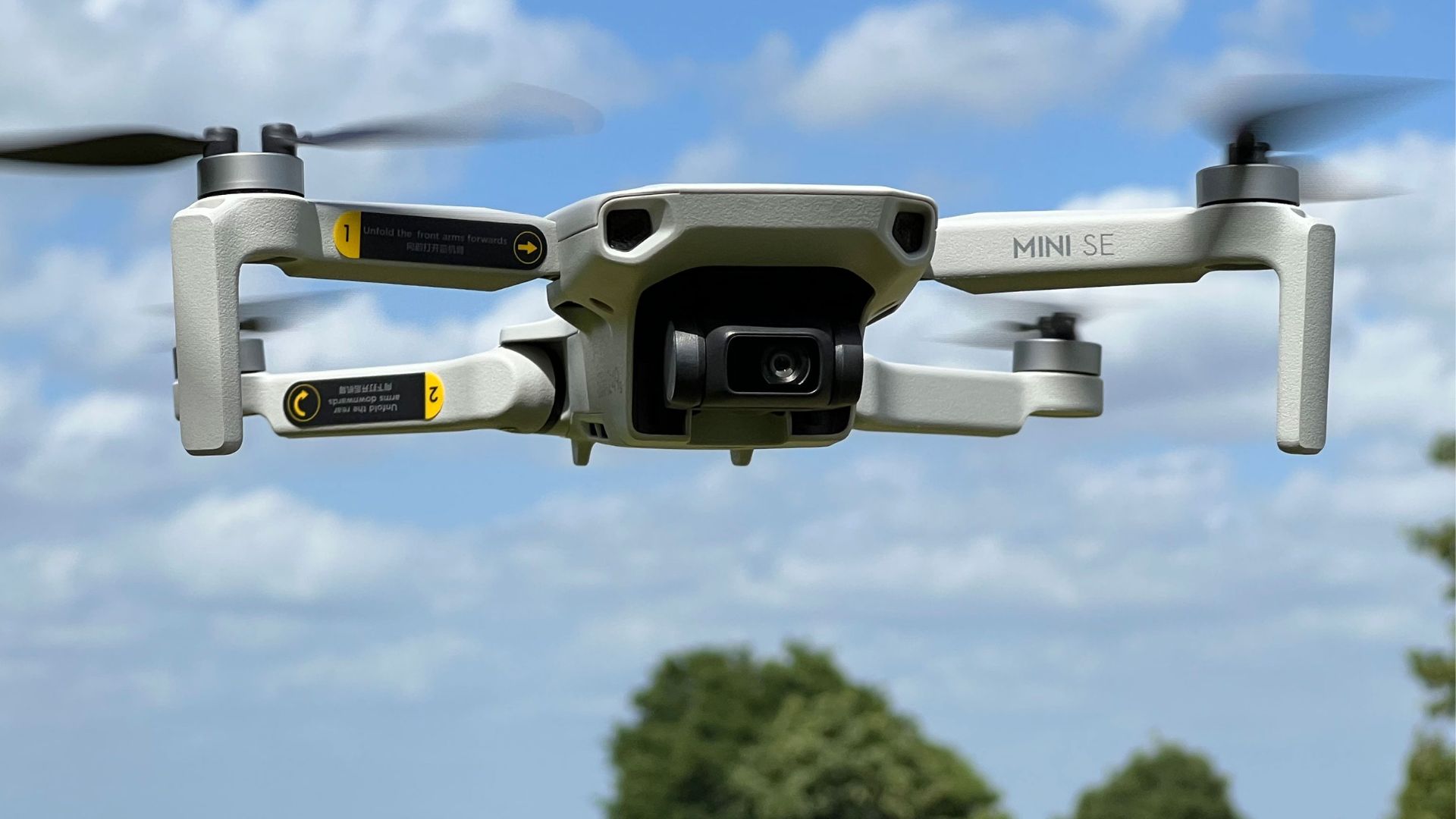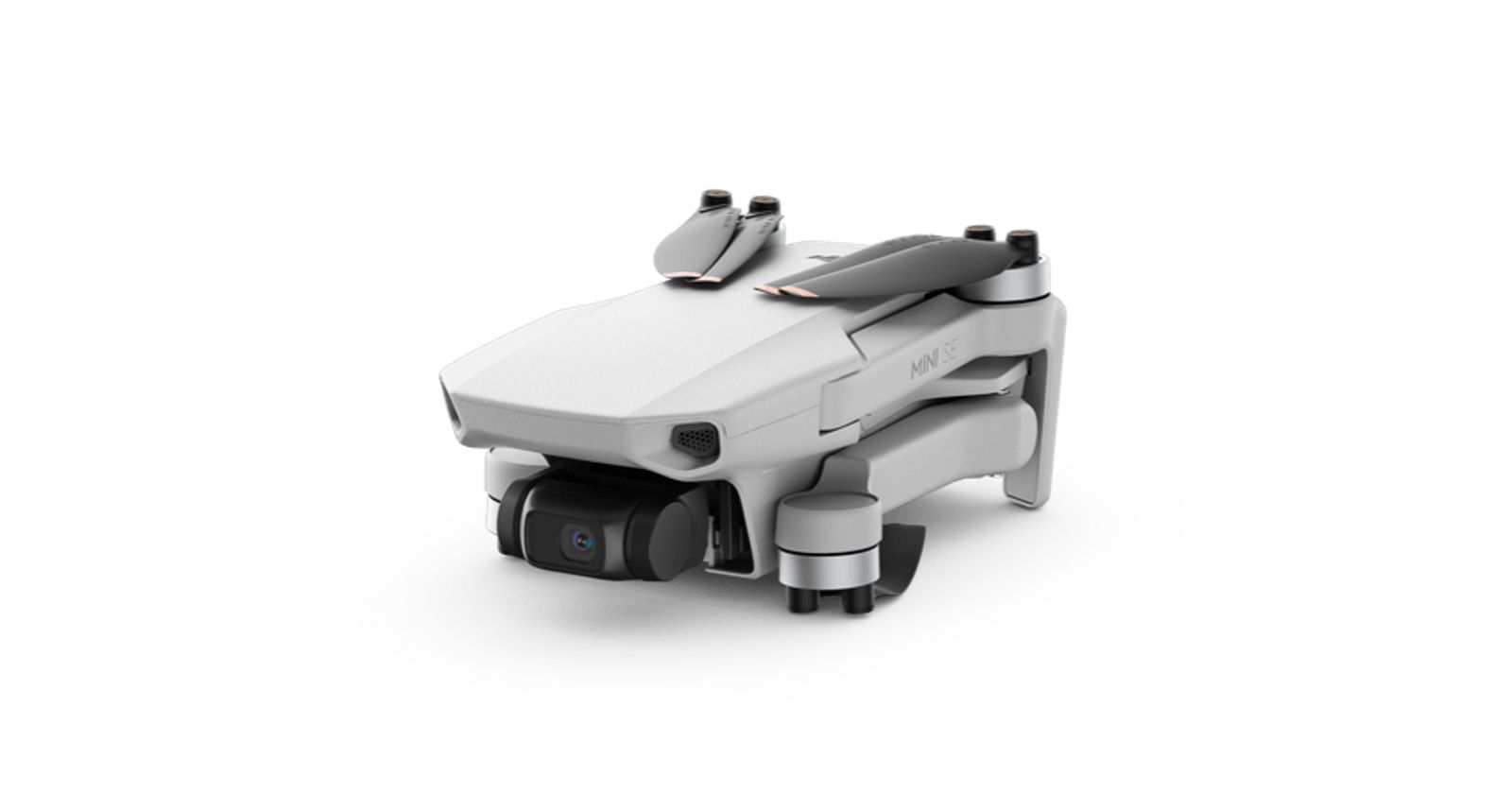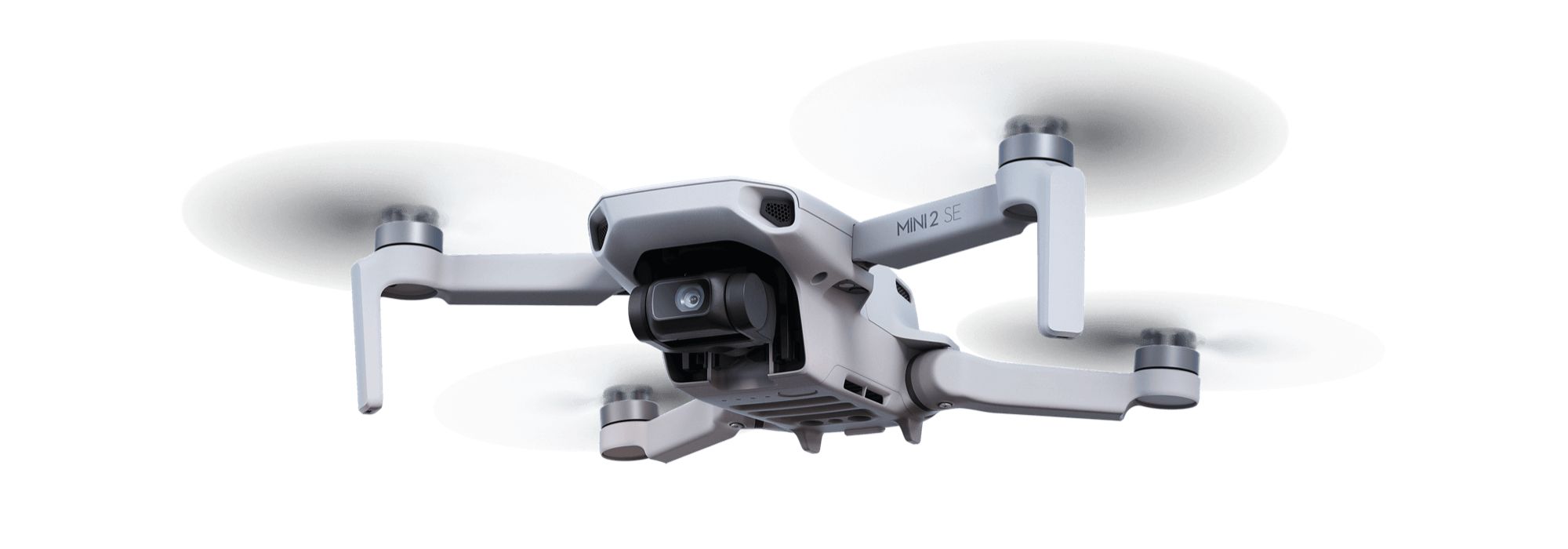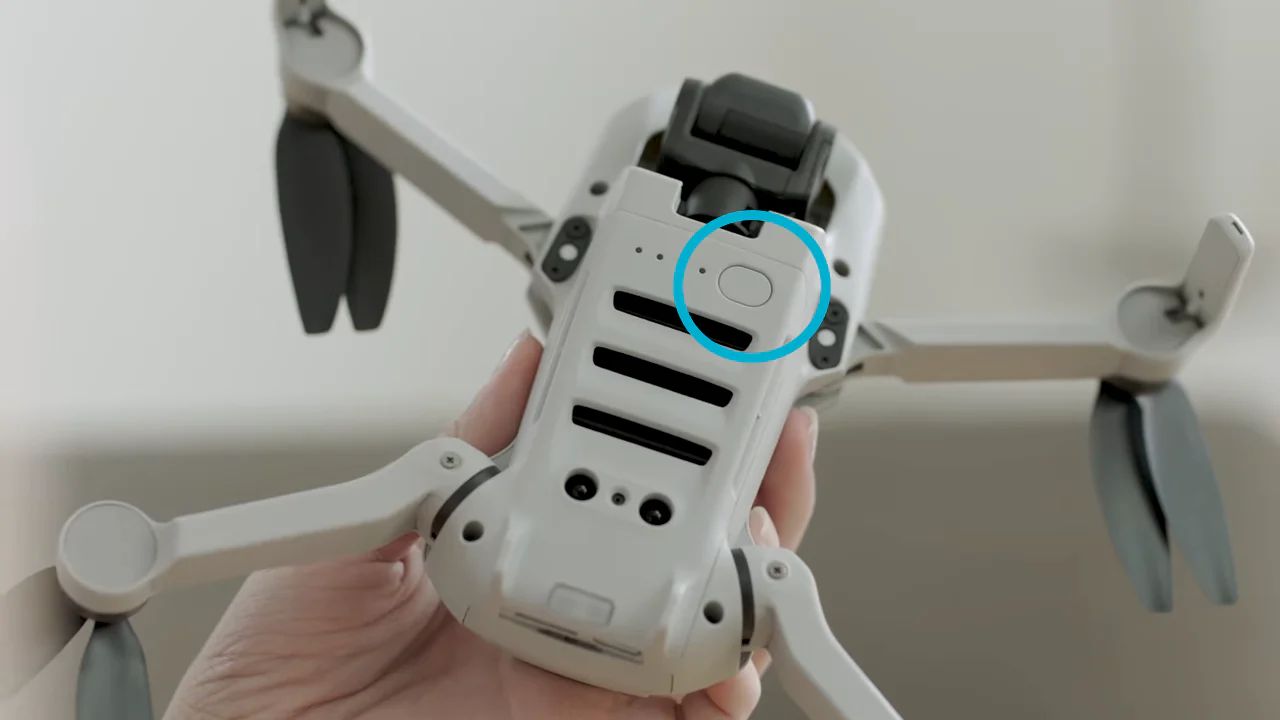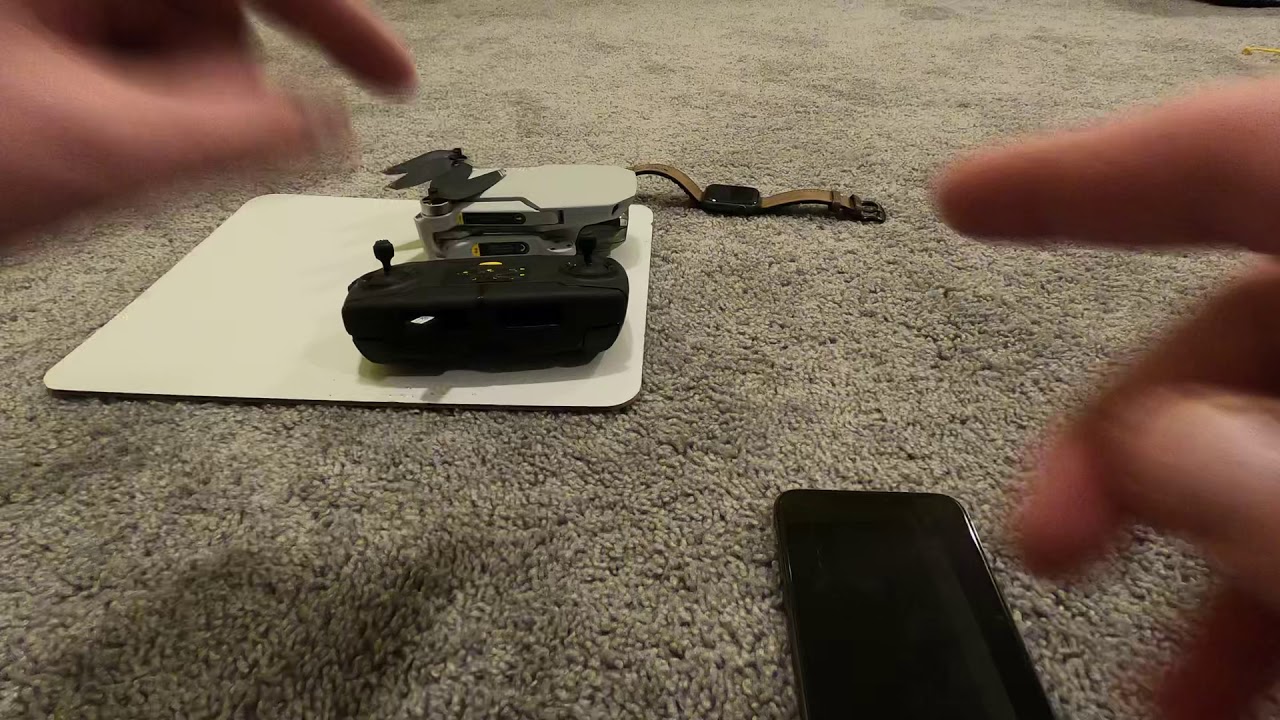Introduction
Welcome to our guide on choosing the right SD card for the DJI Mini SE. If you’re a drone enthusiast or a professional aerial photographer, you know the importance of having a reliable and high-performance SD card. The DJI Mini SE is a compact and versatile drone that offers impressive features and capabilities. To ensure smooth operation and seamless data transfer, it’s crucial to select an SD card that can handle the demands of this powerful drone.
But what exactly is an SD card? This small memory card is an essential component of electronic devices like cameras, smartphones, and, of course, drones. It stores and saves digital files, including photos, videos, and other data. When it comes to drones, the SD card plays a vital role in recording high-quality aerial footage and facilitating smooth data transfer between the drone and other devices.
Choosing the right SD card for your DJI Mini SE is a decision that shouldn’t be taken lightly. A subpar SD card can lead to recording errors, data corruption, and potentially ruined footage. On the other hand, a high-quality SD card can provide optimal performance, faster data transfer, and high-resolution video recording.
In this comprehensive guide, we’ll delve into the factors you should consider when choosing an SD card for your DJI Mini SE. We’ll also recommend some of the best SD cards that are compatible with the drone’s specifications. By the end of this guide, you’ll have the knowledge and confidence to select the perfect SD card for your DJI Mini SE, ensuring that you capture every aerial moment with the highest quality.
What is an SD Card?
An SD card, short for Secure Digital card, is a small, portable memory storage device used in various electronic devices, including drones like the DJI Mini SE. It serves as a removable storage medium that allows users to store, transfer, and access digital files, such as photos and videos.
The SD card format was first introduced in 1999 as a collaborative effort between Panasonic, Toshiba, and SanDisk. With its small size and large storage capacity, SD cards quickly became a popular choice for various applications, including digital cameras, smartphones, tablets, and drones.
SD cards are available in different sizes, including standard SD, miniSD, and microSD. The DJI Mini SE is compatible with the microSD card format, which is the smallest variant. Despite their small size, microSD cards can offer substantial storage capacities, ranging from a few gigabytes (GB) to several terabytes (TB).
SD cards are also classified based on their speed and performance capabilities. This classification is denoted by a Speed Class rating, which indicates the minimum sustained write speed of the card. The Speed Class rating is represented by a number inside a circle, with higher numbers indicating faster write speeds.
It’s essential to select an SD card that meets the specific requirements of the DJI Mini SE to ensure optimal performance, reliable data storage, and seamless recording capabilities. The right SD card will not only enable you to capture stunning aerial footage but also provide fast and efficient data transfer when transferring files to other devices for editing or sharing.
In the next section, we will discuss why choosing the right SD card for your DJI Mini SE is crucial and the potential problems that can arise from using an incompatible or low-quality SD card.
Why is Choosing the Right SD Card important for DJI Mini SE?
Choosing the right SD card for your DJI Mini SE is of utmost importance to ensure smooth operation, reliable data storage, and high-quality recording capabilities. Using an incompatible or subpar SD card can lead to various problems and limit the performance of your drone.
One of the primary reasons why choosing the right SD card is crucial is the need for sufficient storage capacity. The DJI Mini SE supports microSD cards with capacities of up to 256GB. Having a spacious SD card allows you to capture and store a larger number of photos and videos without constantly worrying about running out of space. With high-quality aerial footage taking up a significant amount of storage, a card with ample capacity is necessary for uninterrupted shooting sessions.
Another critical aspect to consider is the read and write speed of the SD card. The DJI Mini SE records videos in high-resolution formats, which require fast write speeds to ensure smooth and uninterrupted recording. Choosing an SD card with a high write speed will minimize the risk of dropped frames and improve the overall quality of your footage. Additionally, fast read speeds are essential for quick data transfer when accessing and transferring files from the SD card to other devices for editing or sharing.
Using an SD card that is not compatible with the DJI Mini SE’s specifications can result in recording errors, corrupted files, and even damage to the drone’s internal storage system. It’s important to select an SD card that meets the specific requirements of the drone to ensure optimal performance and protect your valuable recordings.
Furthermore, investing in a high-quality SD card reduces the risk of data loss or file corruption. Low-quality or counterfeit SD cards often fail to provide the promised storage capacity or reliable data transfer. By choosing a reputable and reliable SD card brand, you can trust that your data will remain safe, and your recordings will be preserved in their original quality.
In the next section, we will delve into the factors you should consider when choosing an SD card for your DJI Mini SE, helping you make an informed decision that will enhance your aerial photography and videography experience.
Recommended SD Card for DJI Mini SE
When it comes to choosing the perfect SD card for your DJI Mini SE, it’s essential to look for a card that offers high-performance, reliability, and compatibility with the drone’s specifications. Here are some of the recommended SD cards that are well-suited for the DJI Mini SE:
- SanDisk Extreme Pro: This SD card is a popular choice among professional photographers and videographers. It offers fast read and write speeds, allowing for smooth and uninterrupted 4K video recording. With capacities ranging from 64GB to 256GB, the SanDisk Extreme Pro provides ample storage for your aerial footage.
- Samsung EVO Select: The Samsung EVO Select is a reliable and budget-friendly option that delivers excellent performance. With UHS-I Class 10 and U3 compatibility, it can handle the high data transfer speeds required by the DJI Mini SE. Available in capacities of 32GB to 256GB, this SD card is suitable for both casual and professional users.
- Lexar Professional 1000x: Designed for high-speed performance, the Lexar Professional 1000x is an SD card that ensures smooth video recording and fast file transfer. It is available in capacities ranging from 32GB to 256GB and offers UHS-II technology for enhanced data transfer speeds. This card is an excellent choice for those who demand top-notch performance.
- PNY Elite-X: The PNY Elite-X is a reliable and affordable option that provides reliable performance for the DJI Mini SE. With UHS-I Class 10 and U3 compatibility, it enables smooth 4K video recording and fast data transfer. Capacities range from 32GB to 512GB, allowing you to choose the right size for your needs.
These are just a few examples of the SD cards that are compatible with the DJI Mini SE and offer excellent performance. When choosing an SD card, it’s essential to consider factors such as storage capacity, read and write speeds, as well as your budget. By selecting a high-quality SD card from a reputable brand, you can ensure that your DJI Mini SE operates at its best and your aerial footage is stored securely.
Now that we’ve explored the recommended SD cards, let’s dive into the factors you should consider when choosing an SD card for your DJI Mini SE.
Factors to Consider when Choosing an SD Card for DJI Mini SE
Choosing the right SD card for your DJI Mini SE involves considering several essential factors. By paying attention to these factors, you can ensure optimal performance, reliable data storage, and seamless recording capabilities. Here are the key factors to consider when selecting an SD card for your DJI Mini SE:
- Storage Capacity: The storage capacity of the SD card determines how many photos and videos you can store. Consider the length and quality of your recordings to determine the appropriate storage capacity. A larger capacity card, such as 64GB or higher, is recommended if you plan to capture extended flight sessions or record in high-resolution formats like 4K.
- Read and Write Speed: The read and write speed of the SD card is crucial for smooth data transfer and recording. The write speed is particularly important for drones like the DJI Mini SE that record high-definition video. Look for UHS-I Class 10 or U3 cards, which offer faster write speeds for seamless recording and fewer dropped frames.
- UHS-I vs. UHS-II: The DJI Mini SE is compatible with both UHS-I and UHS-II SD cards. UHS-II cards have faster data transfer speeds, which can be beneficial for quickly transferring files to your computer or other devices. However, they are more expensive compared to UHS-I cards. Consider your specific needs and budget when deciding between UHS-I and UHS-II cards.
- Video Recording Formats: If you plan to record in high-resolution formats like 4K, it’s crucial to choose an SD card that can handle the data demands. Look for cards that are specifically designed for high-definition video recording to ensure smooth and uninterrupted footage.
- Price Range: SD cards come in a wide range of prices, depending on the brand, capacity, and performance. Set a budget and consider the value that each SD card offers in terms of storage capacity, read and write speeds, and reliability. It’s important to strike a balance between affordability and performance when choosing the right SD card.
By considering these factors, you can make an informed decision and choose an SD card that perfectly matches the requirements of your DJI Mini SE. The right SD card will not only provide ample storage space but also facilitate smooth recording, quick data transfer, and reliable performance.
Now that we’ve discussed the essential factors to consider, let’s move on to the next section, where we’ll explore how to format an SD card for your DJI Mini SE.
Storage Capacity
When choosing an SD card for your DJI Mini SE, one crucial factor to consider is the storage capacity of the card. The storage capacity determines how many photos and videos you can store before needing to offload the files onto another device or replace the card with a larger capacity one.
The DJI Mini SE supports microSD cards with capacities of up to 256GB. This provides ample storage space for capturing a significant amount of aerial footage. However, the ideal storage capacity will depend on your specific needs and shooting preferences.
If you are a casual user and only plan on capturing short flights or occasional footage, a smaller capacity SD card, such as 32GB or 64GB, may be sufficient for your needs. These cards are often more affordable and can still hold a reasonable amount of photos and videos.
On the other hand, if you are a professional aerial photographer or intend to capture long flights or record in high-resolution formats like 4K, it is advisable to opt for larger capacity cards. 128GB or 256GB cards offer more storage space and allow for extended shooting sessions without the worry of running out of storage.
It’s important to note that the actual usable capacity of an SD card will be slightly lower than the advertised capacity due to formatting and file system overhead. This means that a 256GB SD card may have slightly less than 256GB of available storage space.
As a general rule, it’s recommended to have at least two SD cards with you when you go out to fly your DJI Mini SE. This way, you can easily switch cards if one becomes full or in case of any issues with the card during recording.
Remember that having sufficient storage capacity allows you to capture more footage without interruptions, giving you the flexibility to explore different shots and angles. By considering your shooting needs and preferences, you can choose an SD card with the right storage capacity for your DJI Mini SE.
Now that we’ve examined storage capacity, let’s move on to the next section, where we’ll discuss the importance of read and write speeds when choosing an SD card for your DJI Mini SE.
Read and Write Speed
The read and write speed of an SD card is a crucial factor to consider when choosing one for your DJI Mini SE. The read speed refers to how quickly data can be transferred from the card to another device, such as a computer, while the write speed determines how quickly data can be written or recorded onto the card.
For drones like the DJI Mini SE that record high-definition video, having a fast write speed is essential. A high write speed ensures that video files are written to the SD card smoothly and without any dropped frames. It allows for seamless recording, especially when capturing footage in high-resolution formats like 4K.
When it comes to write speed, look for SD cards that have a minimum UHS-I Class 10 or U3 rating. These ratings guarantee that the SD card can handle the high data transfer speeds required by the DJI Mini SE. It’s also worth noting that faster write speeds can be particularly beneficial when recording in high frame rate modes, as these modes require even higher data transfer rates.
On the other hand, the read speed of the SD card influences how quickly you can access and transfer data from the card to another device. While read speed is generally less critical for drones, having a faster read speed can be advantageous when offloading footage or accessing files for editing or sharing purposes.
It’s important to note that the read and write speeds of an SD card are typically specified on the packaging or in the card’s specifications. When comparing different SD cards, opt for cards with higher read and write speeds to ensure optimal performance with your DJI Mini SE.
While faster speeds may come at a premium, investing in an SD card with higher read and write speeds can significantly enhance your drone’s capabilities. With faster write speeds, you can capture smooth and high-quality video footage. Faster read speeds also allow for quicker and more efficient data transfers, saving you time and reducing workflow delays.
Now that we’ve explored the importance of read and write speeds, let’s move on to the next section, where we’ll discuss the difference between UHS-I and UHS-II SD cards and their impact on performance.
UHS-I vs. UHS-II
When searching for an SD card for your DJI Mini SE, you may come across two different types: UHS-I and UHS-II. These terms refer to the speed classification of the SD card and can have an impact on the performance of your drone.
UHS-I (Ultra High-Speed Class I) and UHS-II (Ultra High-Speed Class II) are industry standards that define the maximum data transfer rates of SD cards.
UHS-I SD cards have a maximum theoretical transfer speed of up to 104MB/s. They typically have a single row of pins on the back, making them compatible with most devices, including the DJI Mini SE. UHS-I cards are more readily available and tend to be less expensive than UHS-II cards.
In contrast, UHS-II SD cards have a maximum theoretical transfer speed of up to 312MB/s or even higher. These cards have an additional row of pins on the back, allowing for faster data transfer rates. However, it’s important to note that the DJI Mini SE’s SD card slot is designed to accommodate UHS-I cards, so UHS-II cards will still function but won’t achieve their maximum performance in this drone.
While UHS-II cards offer faster data transfer speeds, unless you plan on using the SD card for other devices that specifically support UHS-II, such as high-end cameras or card readers, opting for a UHS-I card is usually sufficient for the DJI Mini SE. UHS-I cards can meet the necessary data transfer requirements for capturing high-quality aerial footage and offer better cost-effectiveness.
However, if you already have UHS-II cards or have specific use cases that require their faster transfer speeds, they will still work with the DJI Mini SE. Just keep in mind that you won’t fully harness the card’s potential speed capabilities with this particular drone.
Ultimately, the choice between UHS-I and UHS-II SD cards for your DJI Mini SE will depend on your specific needs and budget. If you prioritize cost-effectiveness and compatibility, UHS-I cards are recommended. If you require the fastest possible data transfer speeds and plan on using the card with multiple devices, then UHS-II cards may be worth considering.
Now that we’ve explored the differences between UHS-I and UHS-II cards, let’s move on to the next section, where we will discuss the various video recording formats supported by the DJI Mini SE and their impact on SD card selection.
Video Recording Formats
The DJI Mini SE offers various video recording formats, each with different resolutions and bit rates. When choosing an SD card for your DJI Mini SE, it’s important to consider the video recording formats you plan to use and ensure that your SD card is capable of handling the data demands of those formats.
The DJI Mini SE supports video recording in formats such as MP4 and MOV, with resolutions including 2.7K, 1080p, and 720p. The recording format and resolution you choose will depend on your specific requirements and preferences.
Recording in higher resolutions, such as 2.7K or even 4K, provides stunning detail and clarity in your aerial footage. However, higher resolutions also require more storage space and demand faster write speeds to ensure smooth recording and minimize the risk of dropped frames.
When recording in higher resolutions, it’s recommended to use SD cards with higher write speeds, at least UHS-I Class 10 or U3 rated. These cards can handle the increased data transfer rates required for recording high-resolution video.
For those who prefer shooting at lower resolutions, like 1080p or 720p, SD cards with slightly lower write speeds may still be suitable. However, it’s always a good idea to choose an SD card with a write speed that exceeds the minimum requirements of your chosen format to ensure optimal performance.
Additionally, if you plan to use advanced video recording features like slow motion or high frame rates, it’s important to ensure that your SD card can handle the higher data rates associated with these features.
When selecting an SD card for the DJI Mini SE, consider the resolutions and video recording formats you intend to use most frequently. Opt for an SD card with sufficient storage capacity and write speeds that match or exceed the demands of your chosen video recording formats.
Now that we’ve discussed video recording formats, let’s move on to the next section, where we’ll explore the price range of SD cards and how it can impact your selection for the DJI Mini SE.
Price Range
Price is an important consideration when choosing an SD card for your DJI Mini SE. SD cards come in a wide range of prices, depending on factors such as brand, storage capacity, and read/write speeds.
It’s essential to set a budget and consider the value that each SD card offers. While it can be tempting to go for the most affordable option, it’s important to strike a balance between price and performance.
Higher-priced SD cards often offer faster read and write speeds, larger storage capacities, and better overall reliability. They are usually better suited for professional or frequent users who require top-notch performance and durability.
On the other hand, more budget-friendly options can still provide decent performance and reliability for casual users or those on a tight budget. These cards may have slightly slower speeds or smaller storage capacities but can still adequately meet the needs of many DJI Mini SE users.
Remember that investing in a high-quality SD card is crucial for your drone’s performance and the safety of your precious recordings. Cheaper or low-quality cards may compromise data integrity and put your footage at risk.
When selecting an SD card, compare the prices of different brands and models within your desired storage capacity and performance range. Look for reliable and well-known brands that offer a good balance of price and performance.
If you’re unsure about which SD card to choose, consider reading user reviews and expert recommendations to gauge the reliability and performance of different options within your price range.
By considering the price range and finding an SD card that aligns with your budget and performance requirements, you can make a well-informed decision when choosing an SD card for your DJI Mini SE.
Now that we’ve explored the price range factor, let’s move on to the next section, where we will discuss how to format an SD card for optimal performance with your DJI Mini SE.
How to Format an SD Card for DJI Mini SE
Formatting an SD card is a crucial step to ensure optimal performance and compatibility with your DJI Mini SE. Here are the steps to format an SD card for your drone:
- Back up your data: Before formatting the SD card, ensure that you have backed up any important data stored on it. Formatting erases all the data on the card, so it’s essential to create a backup to prevent data loss.
- Insert the SD card: Insert the SD card into the SD card slot of your DJI Mini SE. Ensure that the card is properly inserted and securely mounted in the slot.
- Access the formatting settings: Power on your DJI Mini SE and navigate to the settings menu on the drone’s controller or mobile app. Look for the option to format the SD card. The exact location of this option may vary depending on the specific DJI app or firmware version you are using.
- Select the SD card: Once you have accessed the formatting settings, select the SD card that you want to format. Double-check to ensure that you have selected the correct card to avoid formatting the wrong card by mistake.
- Format the SD card: After selecting the SD card, choose the option to format or erase the card. Confirm your selection when prompted. The formatting process will begin, and the drone will automatically erase all the data on the SD card and prepare it for use.
- Wait for completion: Allow the formatting process to complete. This may take a few seconds or minutes, depending on the size of the SD card. Do not remove or eject the SD card during the formatting process.
- Verify the format: Once the formatting process is complete, check that the SD card is formatted correctly. You can do this by navigating to the storage settings on your DJI Mini SE and ensuring that the card is recognized and displays the available storage capacity.
Once you have successfully formatted the SD card, it’s ready to use with your DJI Mini SE. Remember to follow the manufacturer’s guidelines and recommendations for formatting and usage to maintain optimal performance and longevity of your SD card.
Now that we’ve covered how to format an SD card, let’s move on to the next section, where we’ll provide some tips for properly handling and storing SD cards.
Tips for Properly Handling and Storing SD Cards
Properly handling and storing your SD cards is important to ensure their longevity and prevent data loss. Here are some helpful tips to keep in mind:
- Avoid touching the contacts: The contacts on the back of the SD card, where it connects to the device, can be sensitive to fingerprints and dirt. To prevent potential issues with data transfer, avoid touching the contacts and handle the card by its edges.
- Insert and remove the card carefully: When inserting or removing the SD card from your DJI Mini SE, make sure to do so gently and securely. Applying excessive force or inserting the card incorrectly can damage the card or the drone’s SD card slot.
- Protect from extreme conditions: SD cards are sensitive to extreme temperatures, moisture, and physical damage. Avoid exposing the card to direct sunlight, water, or extreme temperatures. Store the cards in a cool, dry place away from moisture and magnetic fields.
- Use a protective case: Consider using a protective carrying case or storage sleeve to keep your SD cards safe and organized. These cases can protect the cards from dust, scratches, and accidental damage when not in use or during transport.
- Label your SD cards: If you use multiple SD cards, it’s helpful to label each card with a unique identifier or assign them specific names. This will make it easier to keep track of your footage and ensure that you don’t accidentally overwrite important files.
- Regularly backup your data: SD cards, like any other storage medium, are not immune to failures. To prevent the loss of valuable footage, make it a habit to regularly backup your data to a separate storage device or cloud service. This way, you have an additional layer of protection in case the SD card fails.
- Format the SD card periodically: Regularly formatting the SD card can help improve its performance and reliability over time. It removes any unnecessary data fragments and helps maintain optimal storage space. Just remember to back up any valuable data before formatting.
By following these tips, you can ensure that your SD cards remain in good condition and continue to function properly, providing reliable storage for your DJI Mini SE’s footage.
Now that we’ve discussed proper handling and storage of SD cards, let’s conclude this guide with a summary of the key points we’ve covered.
Conclusion
Choosing the right SD card for your DJI Mini SE is crucial to ensure optimal performance, reliable data storage, and seamless recording capabilities. By considering factors such as storage capacity, read and write speeds, UHS-I vs. UHS-II compatibility, video recording formats, and price range, you can make an informed decision that meets your needs and budget.
It’s important to select an SD card with sufficient storage capacity to accommodate your recording needs, especially if you plan on capturing long flights or recording in high-resolution formats like 4K. Additionally, choosing an SD card with fast read and write speeds, at least UHS-I Class 10 or U3 rated, ensures smooth recording and efficient data transfer.
While UHS-II cards offer faster transfer speeds, most users will find that UHS-I cards are sufficient for the DJI Mini SE. Consider your specific requirements before making a decision.
Furthermore, remember to select an SD card that supports the video recording formats you plan to use and fits within your price range. While higher-priced cards often offer faster speeds and larger capacities, there are also budget-friendly options that provide decent performance.
Once you have chosen the right SD card, it’s important to properly handle and store it to ensure its longevity and protect your data. Avoid touching the contacts, handle the card carefully when inserting and removing it, and protect the card from extreme conditions by using a protective case and storing it in a cool, dry place.
Finally, regularly format your SD card to maintain its performance and consider backing up your data on a separate storage device or cloud service to prevent data loss.
With the right SD card in hand and proper care, you can confidently capture stunning aerial footage and enjoy a smooth recording experience with your DJI Mini SE.









